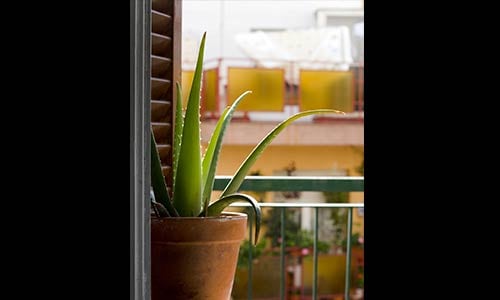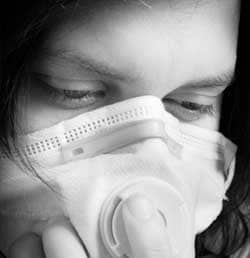10 Indoor Plants That Improve Air Quality
Common indoor plants can prove to be a valuable weapon when it comes to fighting the rising levels of indoor pollution. The NASA Clean Air Study, led by the National Aeronautics and Space Administration in association with the Associated Landscape Contractors of America (ALCA), established in 1989 that indoor plants can be extremely useful in absorbing harmful gases and clean the air indoors.
The indoor pollutants that affect the health are:
– Formaldehyde, which comes from carpets and particle boards
– Volatile Organic Compounds (VOCs) which comes solvents and chemicals in perfumes, hair sprays, air fresheners and furniture polish
– Biological pollutants which constitute of dust, fungi, allergens
– Carbon monoxide and nitrogen dioxides
All these pollutants contribute to ‘sick building syndrome’, which cause symptoms ranging from allergies, headaches, dizziness to nervous system disorders, cancer and death.
Here are 10 plants that can clean up the air indoors for you:
1. Aloe Vera (Aloe barbadensis)
Aloe Vera is a succulent, perennial plant that has the ability to filter benzene and formaldehyde.
There are about 250 varieties you can choose from. It is easy-to-grow and requires a lot of sunlight.
2. Spider Plant (Chlorohytum comosum)
NASA has named the Spider Plant is one of the best indoor plants to remove formaldehyde from indoor air. It also battles benzene, carbon monoxide and xylene. You can neglect this plant all you want, but its resilience keeps it alive.
3. Gerber Daisies (Gerbera jamesonii)
Gerber Daisies have bright and colourful flowers. Not only do they look beautiful, they are great at absorbing carbon monoxide and benzene. This plant gives off oxygen at night; it is ideal for bedrooms.
4. Snake Plants (Sansevieria trifasciata ‘Laurentii’)
Also known as mother-in-law’s tongue, this plant is one of the best at filtering out formaldehyde. It also helps in eliminating nitrogen dioxide. Even at night, it takes in carbon dioxide and releases oxygen. This makes for a good bedroom plant. It requires minimal sunlight and water and is not very difficult to maintain.
5. Golden Pothos (Scindapsus aures)
This fast-growing vine is great at battling formaldehyde. It grows in any type of light with an exception to sunlight and is very easy to maintain. However, it is toxic if consumed. So, if you have kids running around indoors, this one is not for you.
6. Chrysanthemum (Chrysantheium morifolium)
The colourful, bright flowers do a lot more than brighten up the place. It is a seasonal flower, and for the six weeks that it does bloom, it is great at combating benzene. It needs a lot of sunlight to bloom; you want to place it at a place where it receives direct sunlight.
7. Red-edged dracaena (Dracaena marginata)
The red-edged leaves of this plant remove xylene, trichloroethylene and formaldehyde. It is slow-growing and add colour to the environment. However, it is poisonous if consumed by pets.
8. Bamboo palm (Chamaedorea Sefritzii)
This plant is a natural humidifier which can be beneficial in areas with dry air. It helps eliminate carbon monoxide, xylene, benzene and formaldehyde. They thrive in shady indoor spaces and often produce small flowers and berries.
9. Weeping fig (Ficus benjamina)
This plant is useful in fighting benzene, formaldehyde and trichloroethylene. It is a little difficult to maintain this one. It needs a lot of attention vis-à-vis water and sunlight.
10. Warneck dracaena (Dracaena Deremensis ‘Warneckii’)
This plant can reach a height of about 10 feet. It makes for a rather striking houseplant. It helps eliminate VOCs, benzene, formaldehyde and trichloroethylene. It doesn’t need too much light to grow and thrives in room temperature.
(With inputs from Shekhar Chandran, Centre for Science and Environment)















Intresting information.One has to discover the names of these plants as used in nursaries.
Great web site you have got here.. It’s difficult to find high-quality writing like yours these days. I seriously appreciate people like you! Take care!!